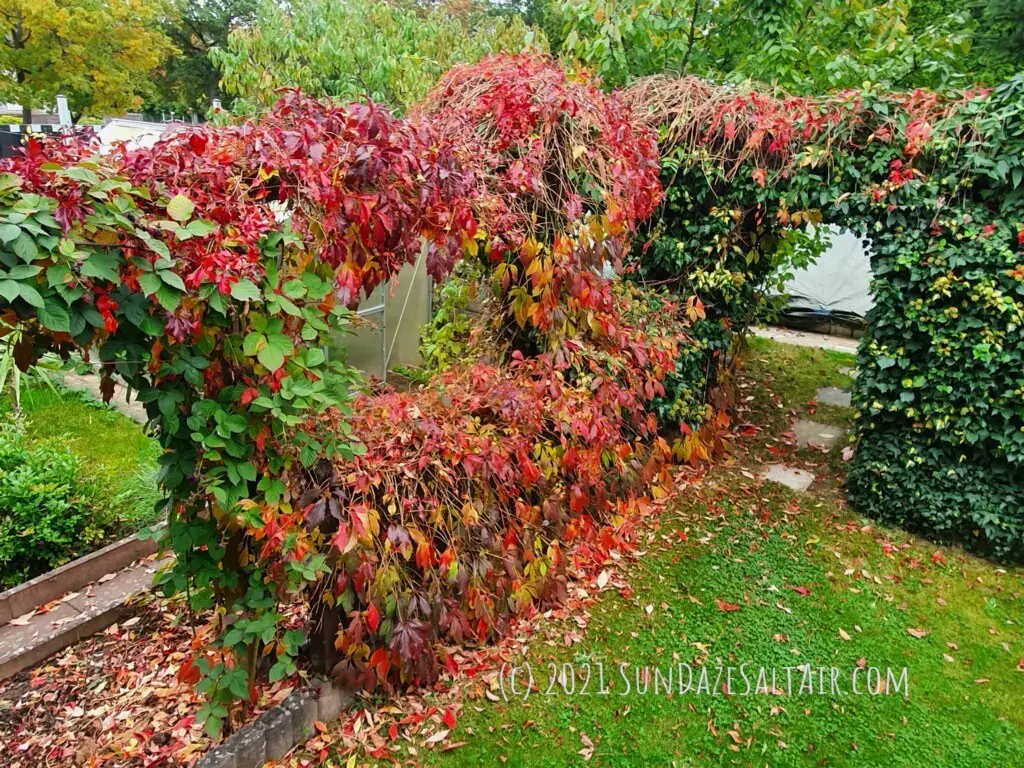
October Garden Chores: Essential Fall Tasks In Your Garden To Savor The Season
Harvest The Bounty, Prepare & Reflect: Twelve Autumn Garden Tasks For October
Spring and summer may be celebrated for their colorful flowers bursting with new life but October is truly a tapestry of vibrancy even as life slows in anticipation of winter darkness. The dropping temperatures in the march toward winter make October one of the most delightful times to be outside, savoring the season, especially as rapid changes take place altering the garden landscape. Low humidity and brisk, fresh air makes otherwise tedious garden tasks of harvesting and clean-up that much more enjoyable. Not to mention, the kaleidoscope of Fall colors that is the changing leaves and vivid Fall flowers. Let’s take a look at a few essential October garden “chores” you should undertake in your garden right now to make the most of this most delightful and magical of seasons…
Don your most comfortable gardening attire and let’s go outside because as October often brings the last warm breath of Indian Summer, our time in the sun, and the garden, is short. Especially if you hope to complete your tasks before the first looming frost and impending winter darkness.
“No spring nor summer beauty hath such grace as I have seen in one autumnal face.”
-John Donne
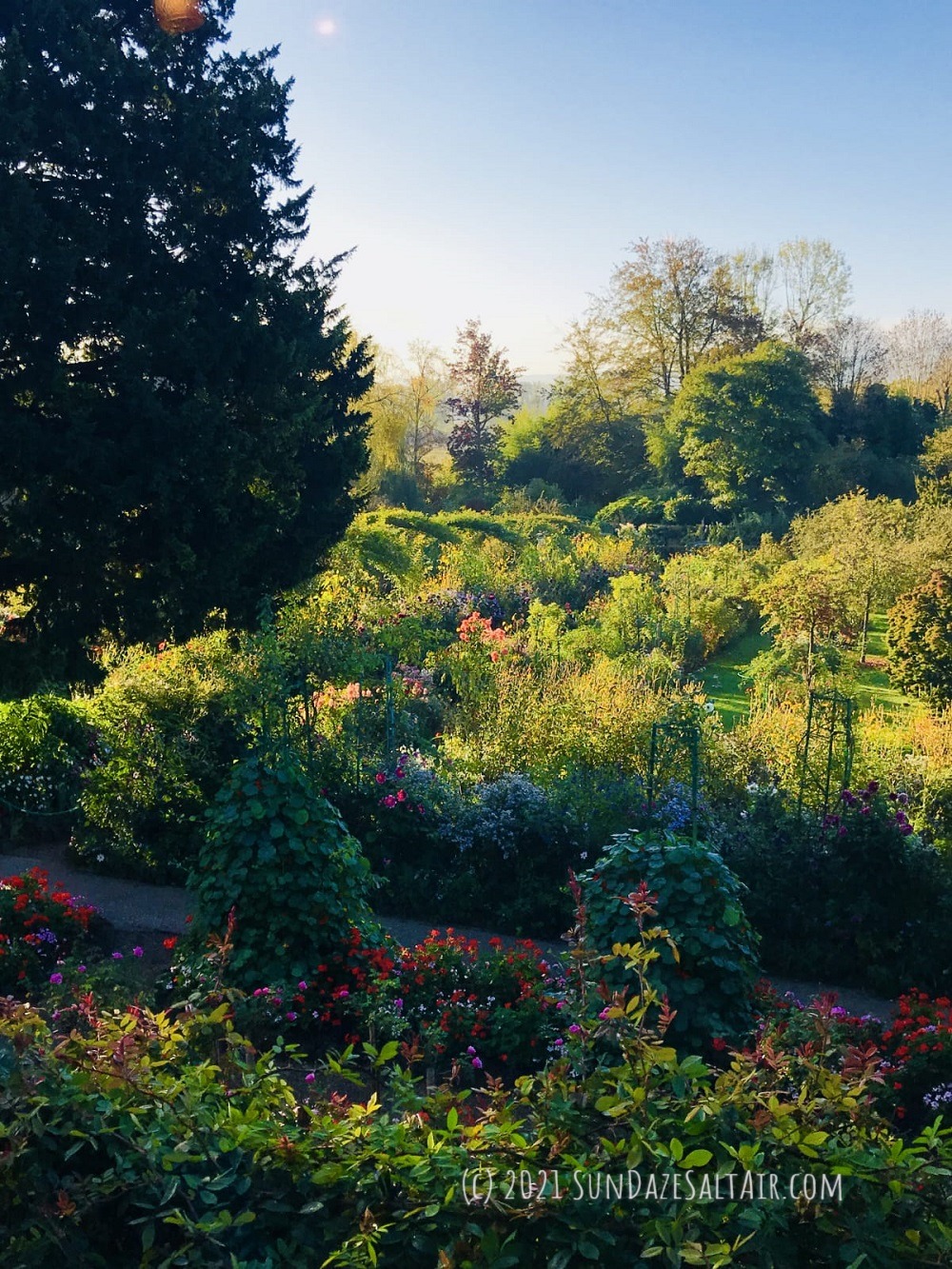
October Garden Tasks
With the bright autumn sun turning cold and the shorter days heralding the darkest time of the year, October represents the waning of not just the old year but also of your garden. However, even as it prepares for its deep winter sleep, there is a rare and unique beauty in this seasonal “death.” No matter where you live, October in the garden can be quite magical. The trees that line the yard transform from lush green to shimmering golds, rusts and oranges. Meanwhile, bright pumpkin faces begin to appear in windows and on porches, in anticipation of the ancient feasts honoring the dead, ready and waiting to illuminate the impending darkness.
While gardening tasks will vary widely depending on the region in which you live, there is usually plenty of harvesting and maintenance tasks to keep you busy in the crisp autumn air. And if you live up North, you will want to savor these last sunny days in the brisk autumn garden since winter’s short, dark days are not far off.
Did You Know?
Fewer hours of daylight & dropping temperatures signal leaves to cease their food-making process of converting green-pigmented chlorophyll into food. As the chlorophyll breaks down, the green color disappears, and yellow, orange and red colors become visible, giving leaves their magical autumn hues…

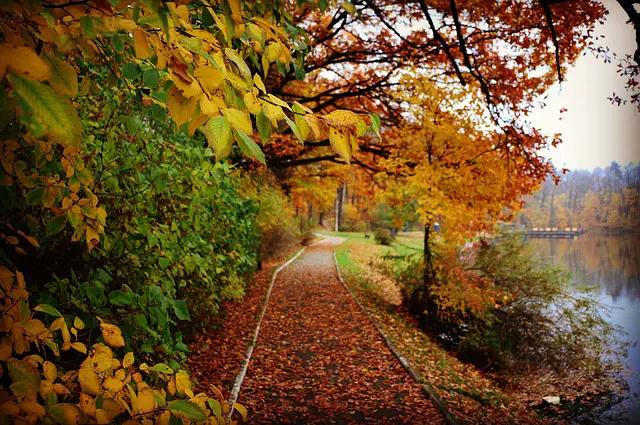
October Garden Chores: Essential Fall Task # 1: Pot Your Herbs (Or Even Plant Some)
I recently published this post about how to move and grow herbs indoors for the winter since time is of the essence to beat the first frost. Potting your parsley, rosemary, thyme and other savory herbs for a winter kitchen garden is not hard to do and ensures you will have a fresh supply of herbs all winter long and into spring.
Of course, you can also preserve some herbs for the winter by drying and storing them as well.
If you live somewhere with more mild winters such as the South or Southwest, the temperate winter weather can actually provide ideal growing conditions to start a parsley, dill, or cilantro herb garden right now.
**TIP! Find out the approximate date of the first frost where you live here…
Pot & Relocate Your Tropical Plants & Other Container-Friendly Crops
In addition to your herbs, don’t forget to pot and move to a sheltered area any tropical plants that summered outdoors, as well as plants like cherry tomatoes which take well to growing in containers.
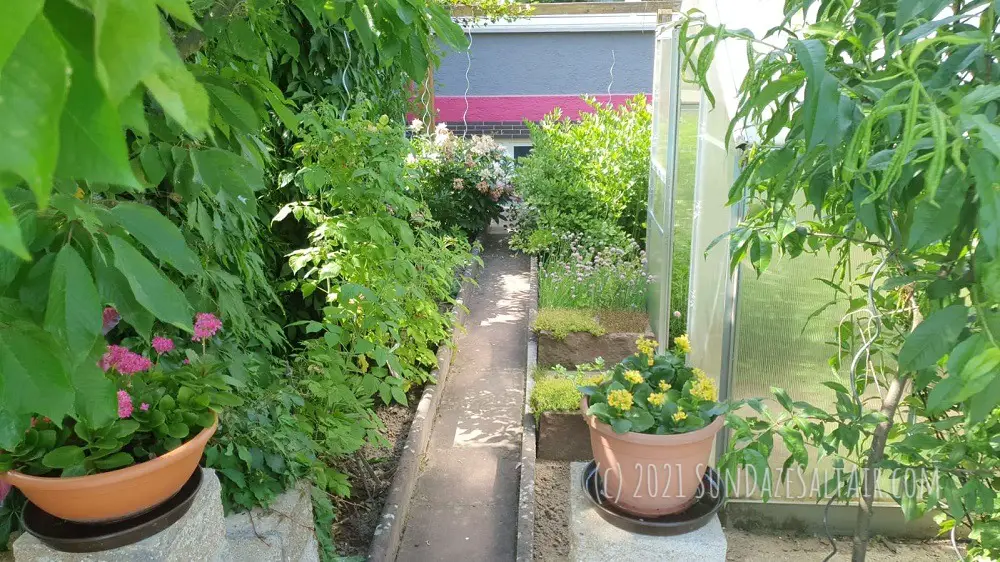

October Garden Chores: Essential Fall Task # 2: Gather Your Harvest… Apples, Winter Squash (Pumpkins!)….
We have all heard of frost on the pumpkin, but your goal should be to bring in the last of your summer fruits and vegetables before the first frost hits. October truly is one of the busiest fall months in the garden with plenty of earthing-up and storing away to be done…
In Northern Grow Zones, Gather Final Harvests & Protect
If you live in the most Northern USDA grow zones 1 through 4, you may already be gathering your final harvests of the season and laying winter mulch throughout your garden. If you live anywhere up to zone 7, and you haven’t already done so, make an effort to cover or shelter any final crops from harsh October frosts and winds.
TIP! Find out your USDA grow zone here by typing in your zip code…
In More Mild Zones, Harvest Remaining Summer Fruits & Vegetables
In zones 5 through 7, October is the peak time to gather the last of the summer tomatoes and celery, which should be in full growth, as well as zucchini, red peppers, apples, melons, winter squash, berries, rhubarb, asparagus and of course, pumpkins.
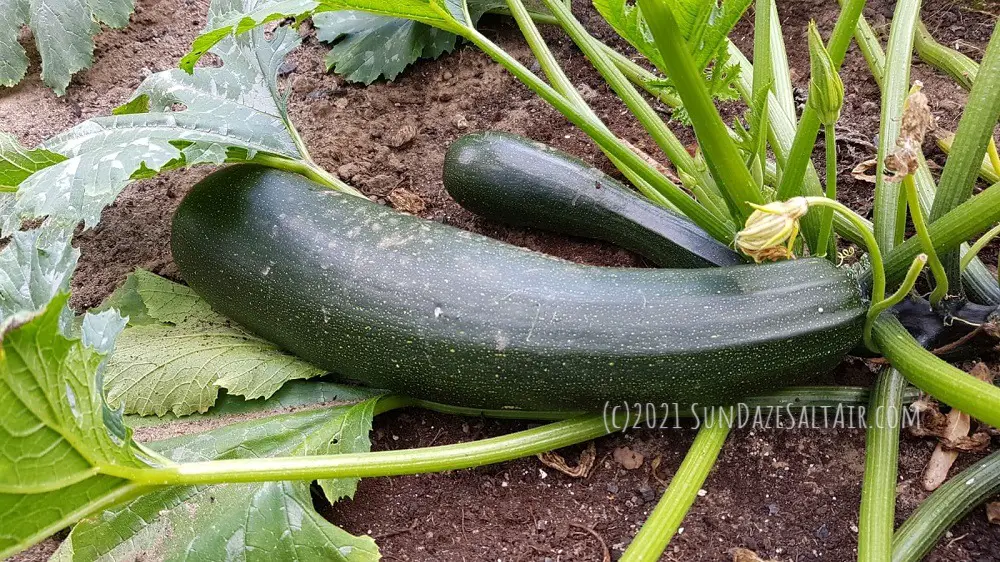
In Mild Climates, Sow Cold Weather Crops
If you live in zones 8 through 11, you should also start to plant cold weather crops such as garlic, spinach, parsnips, beets and radishes, which I discuss below in October Garden Chores: Essential Autumn Task # 10: Sow Cold-Weather Crops…
How To Harvest? Have Baskets & Buckets To Collect Your Garden’s Bounty
Be sure you have a few baskets (or buckets) handy to gather your amazing autumn harvest.
Have separate ones to collect your various fruit and vegetable crops. If you are lucky enough to have a large harvest, don’t forget that you can always store, preserve or pickle your surplus.
While you are at it, have a separate basket ready to collect flowers to pot, dry or display as beautiful autumn bouquets. As mentioned above, your herbs can be potted in containers for the winter, or cuttings can be gathered to dry and preserve for use year ’round.
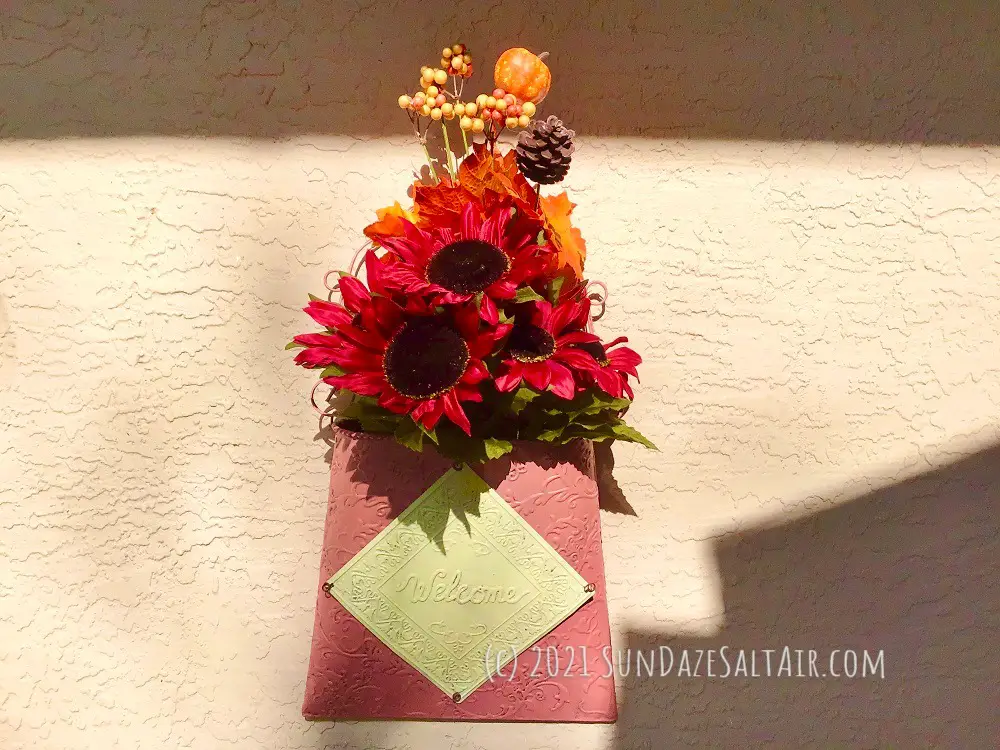
TIP! Gather Cuttings For Future Propagation
October is also a good time to gather cuttings from any plants you wish to propagate in the future.
After harvesting, take the opportunity to clean up your garden beds and make room for planting some cool-weather crops…
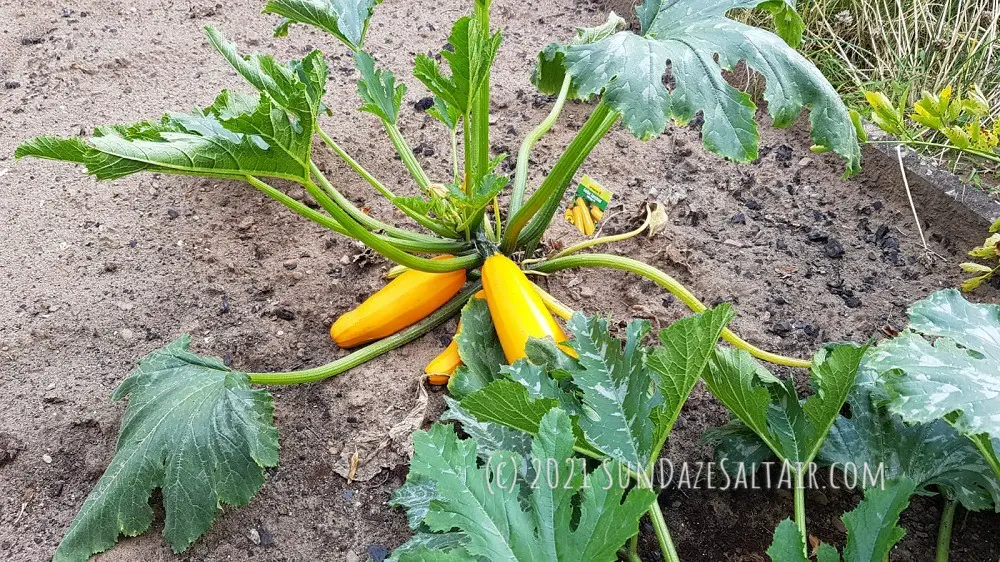
October Garden Chores: Essential Fall Task # 3: Garden Bed Clean-Up, Maintenance & Mulch
Prune and deadhead any dying plants or flowers, then rake any fallen leaves as well as your garden beds. Gather all this dead plant material in a bucket. Rather than just disposing of everything, remember that any disease-free plants, flowers or shredded leaf debris can and should be added to your compost pile and used to mulch your garden beds. Even in their demise, your dying vegetation can provide new life come spring.
Rake Those Leaves & Save Them?
Autumn leaves don’t just add stunning, vibrant color to your fall garden, they also happen to be the best soil conditioner around. All those fallen leaves make an excellent and free source of nutrients.
TIP! Start A Compost Pile

If you don’t already have a compost pile, now is a good time to start one to ensure your future garden and crops are fertile and nutrient-dense. If you’d rather not make your own DIY compost bin, invest in a durable, BPA-free option like this sturdy tumbler model which holds 43 gallons of material and should last for years.

“Listen! The wind is rising, and the air is wild with leaves! We have had our summer evenings, now for October eves!”- Humbert Wolfe (1886-1940). Autumn sunsets take on a spookiness under October storm clouds hanging over the dock…
Don’t forget to celebrate the spookiest time of the year with some Halloween decor ideas I’ve gathered for your home & yard — from scary to whimsical, quirky & kooky to Alfred Hitchcock-inspired — there is something here for everyone…

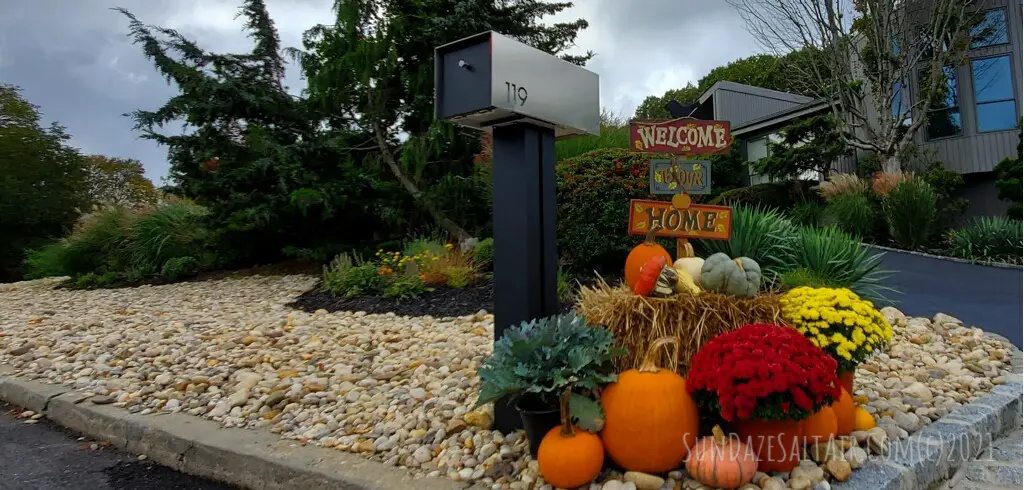
October Garden Chores: Essential Fall Tasks # 4: Add Nutrient-Giving Compost, Mulched Leaves & Grass Clippings To Your Soil For A Bountiful Spring Garden
As stated above, when you dig up and pot your herbs and harvest your vegetables, you have a perfect opportunity to “feed” your garden from your compost pile. Nutrients in the form of compost will perform its “magic” all winter preparing your soil and garden for the best and most prolific crops ever once spring arrives.
TIP! Is Your Soil Unbalanced?
If you need to infuse your soil with more nitrogen, look no further than white clover (Trifolium repens), a ground cover perennial that can add necessary nitrogen to your soil without the need for special fertilizer.
TIP! While Feeding Your Soil Is Fine, Don’t Feed Your Plants
As the seasons change and the warm weather cools, your plants will be slowing their growth for the winter. During this slow time, your plants will not need any additional synthetic fertilizer.
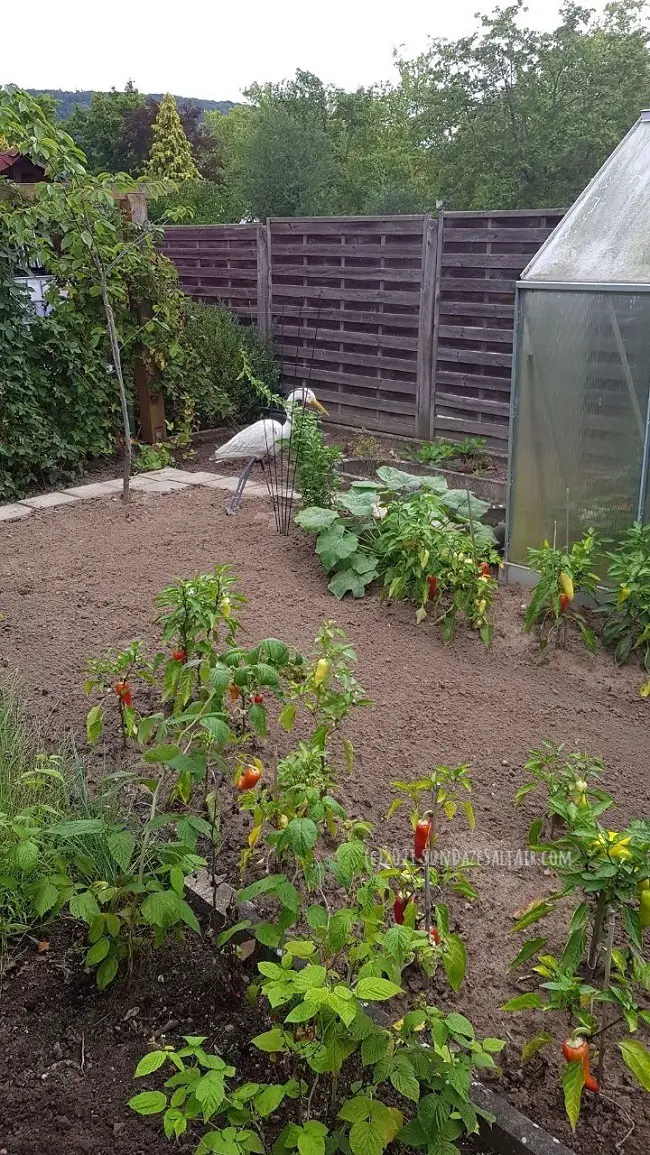
October Garden Chores: Essential Fall Tasks # 5: Plant Cool Season Annuals Like Ornamental Cabbage & Kale
In fall, colorful chrysanthemums and pansies abound as the go-to for seasonal floral color. But, do not forget another group of cold-tolerant plants that can brighten the season with vibrant color — ornamental cabbage and kale (“Brassica oleracea”). Though they may technically be flower-less, few things add brightness better to an otherwise dreary garden than these cold-weather ornamentals. When everything else is looking spent and ready for a winter grave, these plants come to life with large colorful rosettes of leaves in vivid fall hues of purple, red, white and pink.
Did You Know? The Cold Temperatures Bring Out The Vibrant Colors Of Ornamental Cabbage & Kale
Ornamental cabbage and kale may be the same species as edible cabbage, broccoli and cauliflower, but they possess much more dramatic and colorful foliage in the garden than their edible cousins from the vegetable patch. You can start seeds as early as mid-summer, but these cold-loving plants need cool conditions to thrive. Not to mention, it is only when the temperatures drop do their colors become more vivid.

TIP! Don’t Forget To Pick-Up Some Apple Cider This Fall
Make sure you take a break from all your hard work & whip up & enjoy the perfect delicious, cozy autumn drink for brisk fall days & nights…. Hot Caramel Apple Cider Like Starbucks But Better
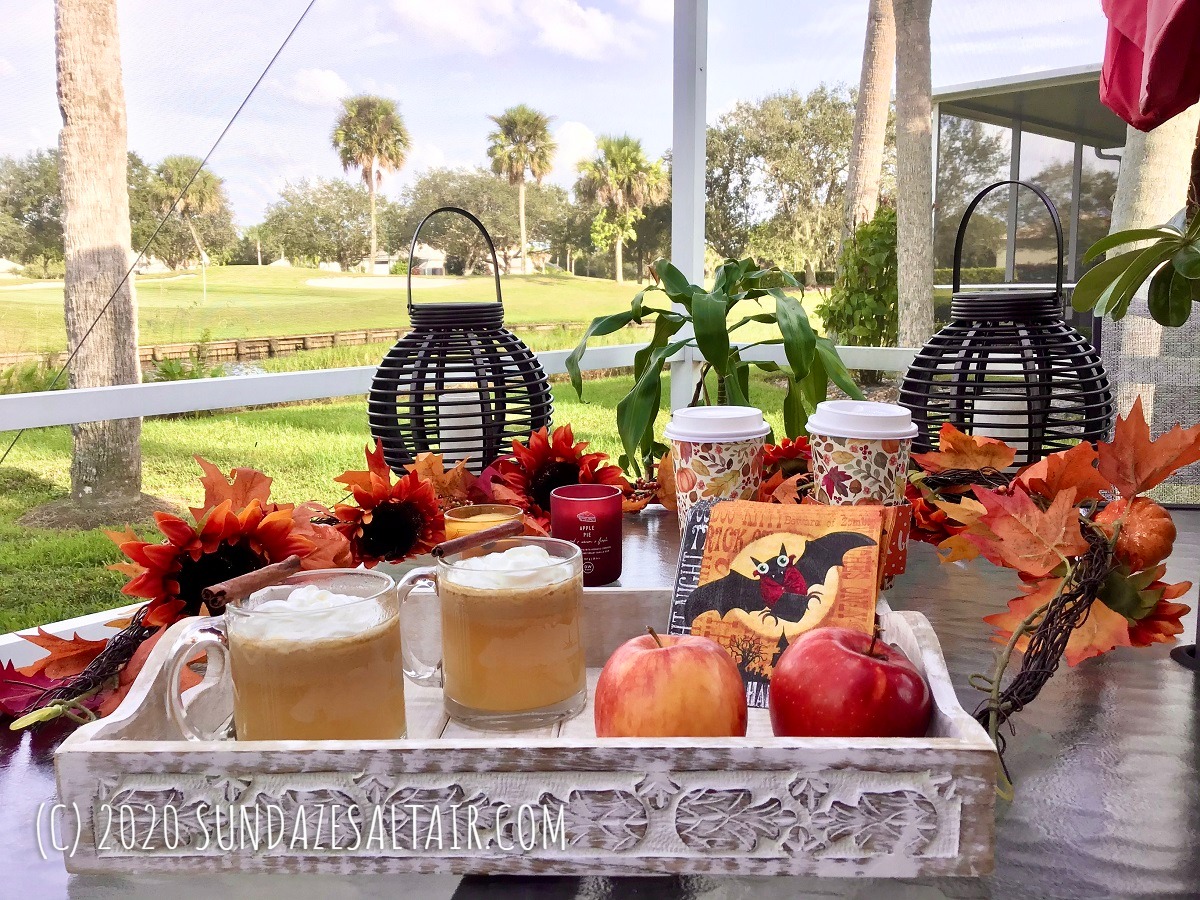
October Garden Chores: Essential Fall Tasks # 6: Plant Mums & More Cool Season Annuals For Beautiful Autumn Blooms
No October garden is complete without adding the stunning autumn colors of Chrysanthemums to your fall garden. Gorgeous and affordable, mums should be everywhere at your local garden center, so don’t forget to pick some up in striking and cheerful harvest hues.
While you are at it, if your temperatures are relatively mild, consider planting other cool-season annuals such as snapdragons, pansies, petunias, phlox, sweet alyssum and sweet peas. If your weather happens to be very warm and dry, be sure to water your plants frequently to ensure beautiful autumn blooms.
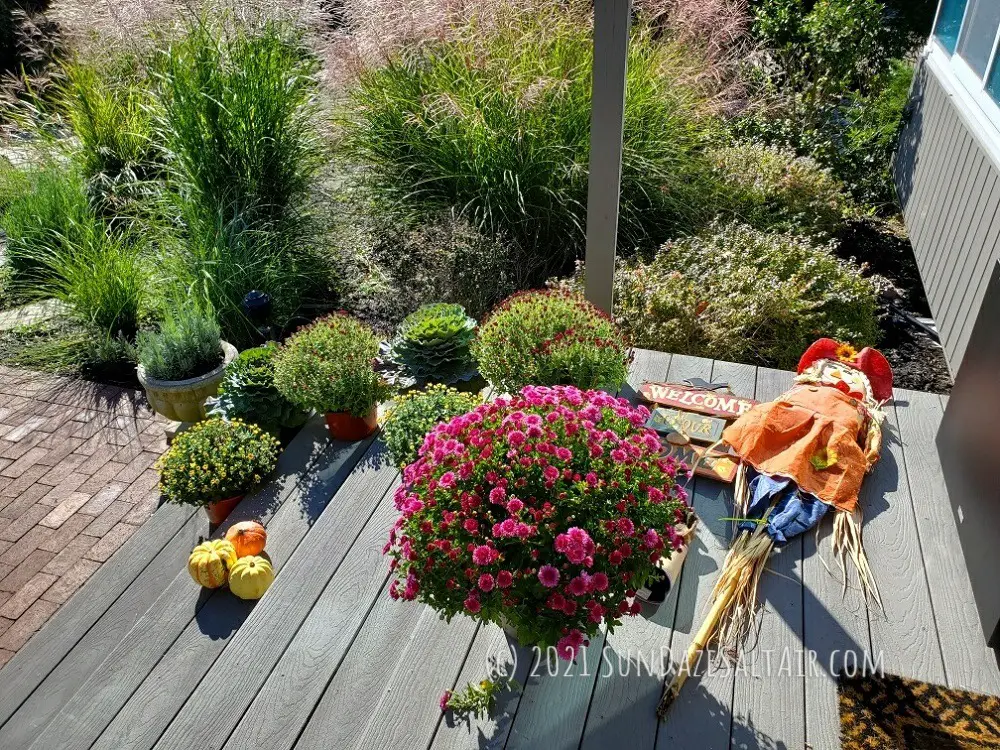
October Garden Chores: Essential Fall Tasks # 7: Cover & Protect Fall Flowers & Vegetables From Cold & Autumn Winds
Pay attention to the weather forecasts in this month of rapid change. As with your vegetable crops, an early frost can potentially short-circuit any fall flower blooming season. If the forecast calls for an evening frost, be sure to cover any chrysanthemums, asters, and other fall flowers. Not only will this precaution extend their blooming season but it could protect them from an early death.
Autumn winds can also take their toll on any still-ripening tomatoes and other taller plants such as salvia. Make sure to tie up any leaning plants with stakes and ties or green garden tape. If the weather takes a turn for the worse, you can also remove any green tomatoes and move them indoors to ripen.
October Garden Chores: Essential Fall Tasks # 8: Take Up, Dry & Store Tender Bulbs Like Dahlias, Tuberoses & Gladiolus For The Winter
If you live anywhere in USDA plant hardiness zones 8 or higher, you shouldn’t have any problems growing tender bulbs, such as Dahlias, gladiolus, cannas and tuberoses. However, before the end of this month, Northern-dwelling gardeners should dig up and store any of these summer-blooming, tender bulbs that are to be planted in the spring.
Over-winter them by drying and storing them someplace free of frost until next spring when any danger of frost has passed.
October Garden Chores: Essential Fall Tasks # 9: Plant Spring-Flowering Bulbs Such As Tulips & Crocuses
Some bulbs, especially tulips and hyacinths need a period of cold weather in order to develop strong roots so in USDA plant hardiness zones 4 or 5 you should begin planting tulips, hyacinths, daffodils and crocuses. Aim to plant before the end of this month or at least 6 to 8 weeks before the first frost so they have the best chance of survival.
If you live in a warmer climate and your season is mild, consider refrigerating tulip and hyacinth bulbs now (separate from fruits and vegetables) for about 6 to 8 weeks and then planting them in December.
Like a secret, hidden nook of presents, as soon as spring rolls around, the bulbs will burst forth with unexpected gifts of flowers peeking through the snow.
**TIP! Now is a good to time to divide any perennials to relocate them to fill up bare spots in your garden.
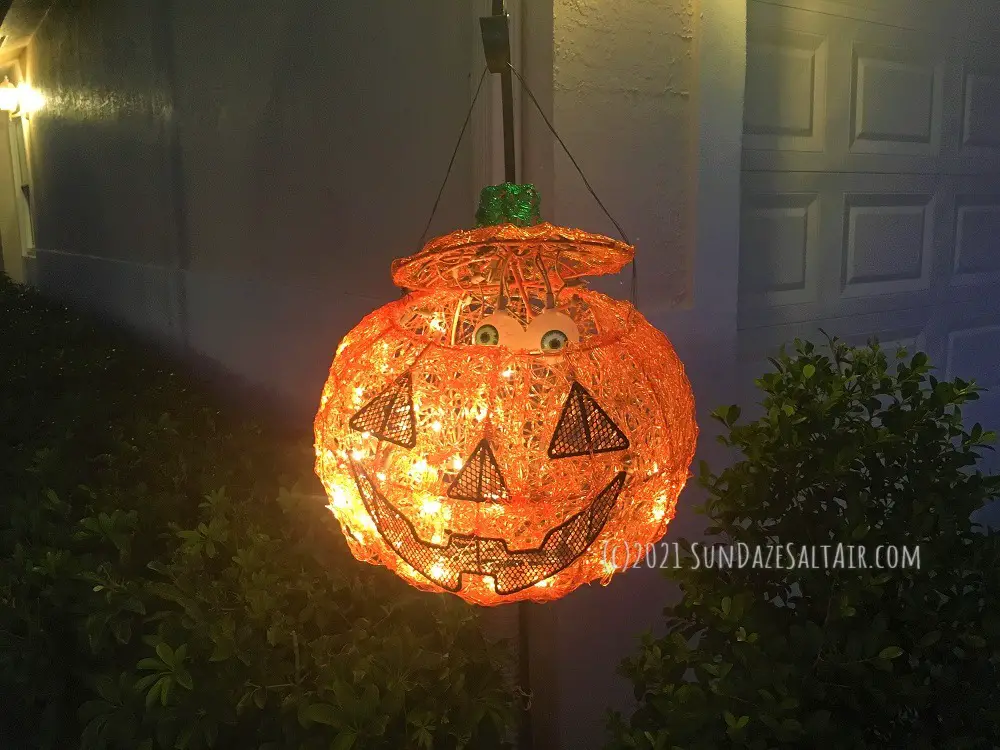
October Garden Chores: Essential Fall Task # 10: Sow Cold-Weather Crops
In milder climates with cooling temperatures, even as you continue to harvest summer fruits and vegetables, you should start your fall/winter vegetable garden. Plant seeds for quick-growing, cooler weather-loving vegetable crops like beets, parsnips, cauliflower, kale, kohlrabi, carrots, leeks, onions, radishes, potatoes and turnips… Phew! And don’t miss out on planting spinach, lettuces and other greens in planters.
October Garden Chores: Essential Fall Task # 11: Grow Some Garlic
Garlic is an awesome, easy and hardy winter crop that every gardener should grow. Plant garlic now so it can take root before the really cold temperatures set in. Come spring, verdant green shoots will pop up in the garden growing into a full-size garlic bulb in time to be ready for harvest next summer.
Essential Fall Task # 12: Reward Your Hard Work By Enjoying The Wonders Of The Season
As you accomplish your to-do list in your fall garden, make sure to take quiet breaks in between for reflection and appreciation. And there are few better ways to relax and warm up from the chilly autumn air than with a cup of the “unofficial fall drink,” Hot Spiced Caramel Apple Cider Like Starbucks But Better, the recipe which can be found here… Seriously, amidst your hard work in the brisk autumn air, don’t forget to stop, relax and appreciate the beauty and changes of the season that are happening all around you…
********
What autumn tasks do you most look forward to in your garden every fall? Share your favorite things about autumn in your garden in the comments!


You May Also Like

How To Transfer Photos From iPhone To USB Flash Drive & Free Up Space On Your Phone – No Cloud Necessary
December 6, 2021
How To Make A Room With High Ceilings Feel Cozy & Intimate
December 14, 2020